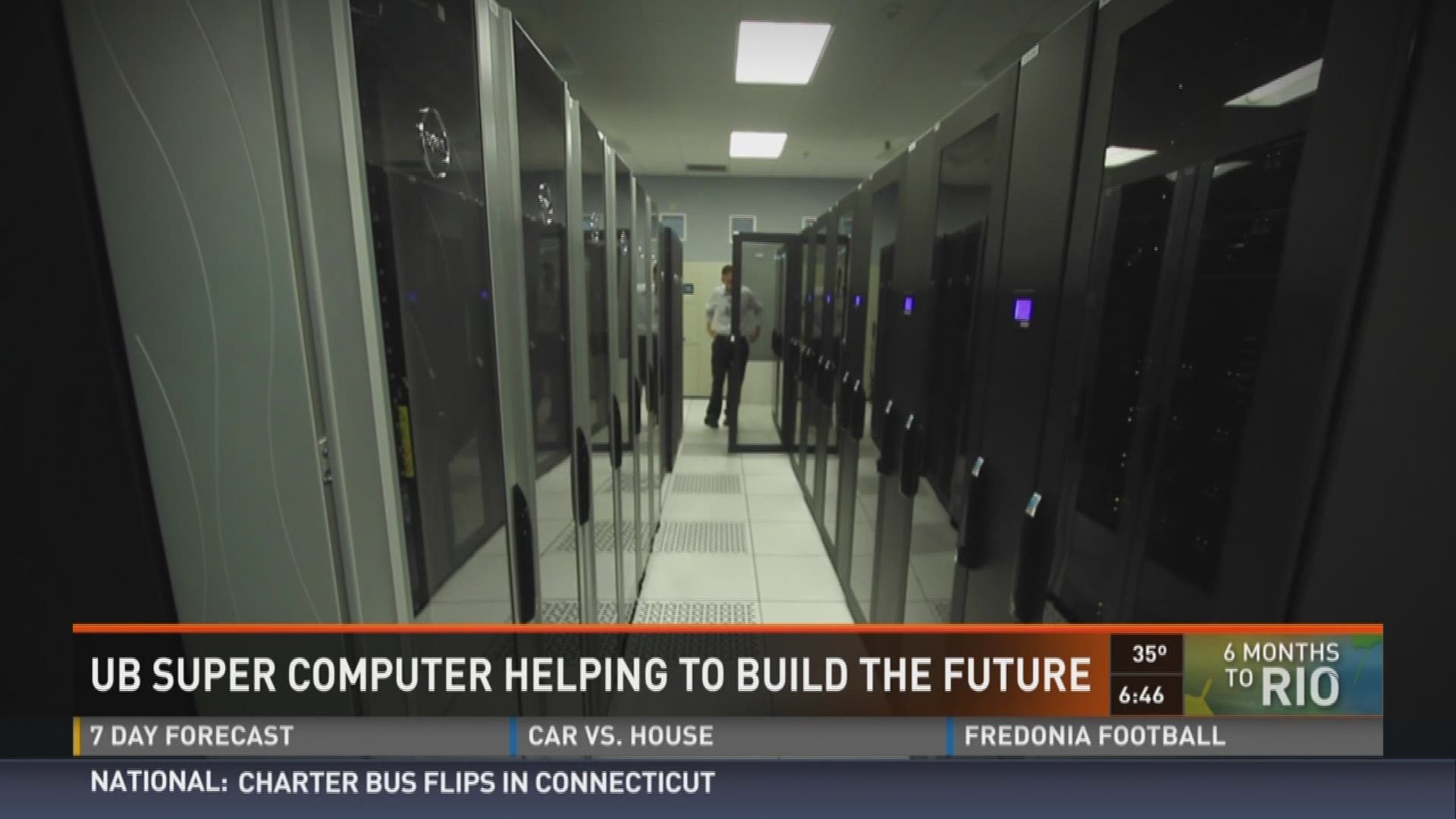BUFFALO, NY - The University at Buffalo is a renowned research institution. The students, PhD candidates and other scientists are working in a variety of fields to build the future.
Research requires a lot of computing power, and UB has one big computer.
"The UB CCR is a leading academic supercomputing facility," Dr. Shawn Matott said.
The Center for Computational Research, or CCR for short, is one of the handful of supercomputers in New York State that offers researchers and industry high performance computing.
The CCR has over 11,000 processors that service UB academia, 8,000 processors for industry, and an over 3 petabyte file system. For those doing your math at home, one petabyte is equal to one million gigabytes.
"A problem that might take several weeks on your laptop," Dr. Matott said, "could be done in an hour in our supercomputing cluster.
But the CCR doesn’t just assist researchers at UB. Through the New York State High Performance Computing Program, UB is part of a consortium of several NYS schools that allows industry to take advantage of the supercomputer's horsepower.
"The idea there is that we can outreach companies like Sentient and get them running their calculations on our cluster," said Dr. Matott. "They'll be able to get their calculations faster, tackle much larger problems that way."
Sentient Science, a Buffalo based software company and the subject of the first Innovate WNY story, uses the UB CCR for their heavy data lifting to monitor the efficiency of wind turbines.
A variety of research is conducted using the computing power of the CCR. Molecular modeling and understanding the fluidity of fire are just a few. Nearly every department in engineering and science uses the CCR to some degree. Many of the researchers are allocated portions of that 3 petabyte system and can request more as needed.
Portions of the CCR were upgraded in January 2015 and as part of a grant staff at the CCR will explore expanding the computing power. Right now the UB supercomputer is the most powerful in the consortium of NY institutions.
"There's always kind of an arms race," said Dr. Matott. "We collaborate but we also compete."
Arms races aside, the Center for Computational Research is playing a key role of building not only the Buffalo of tomorrow, but the world of tomorrow.

